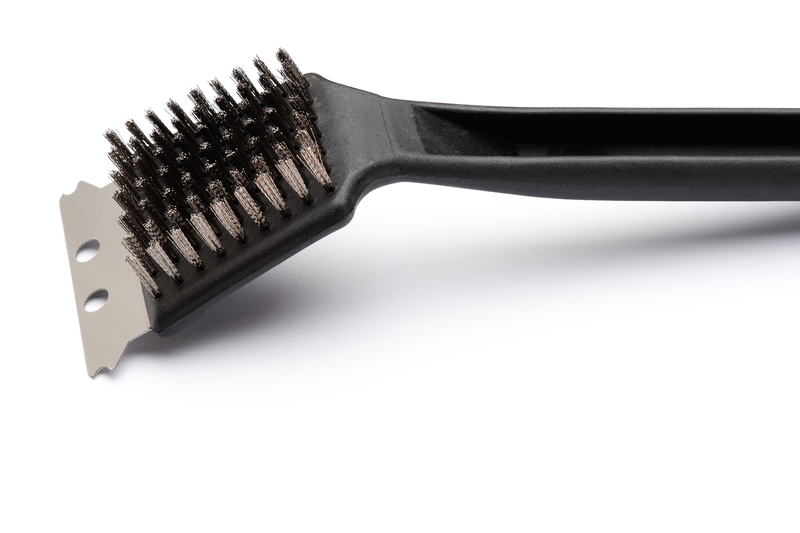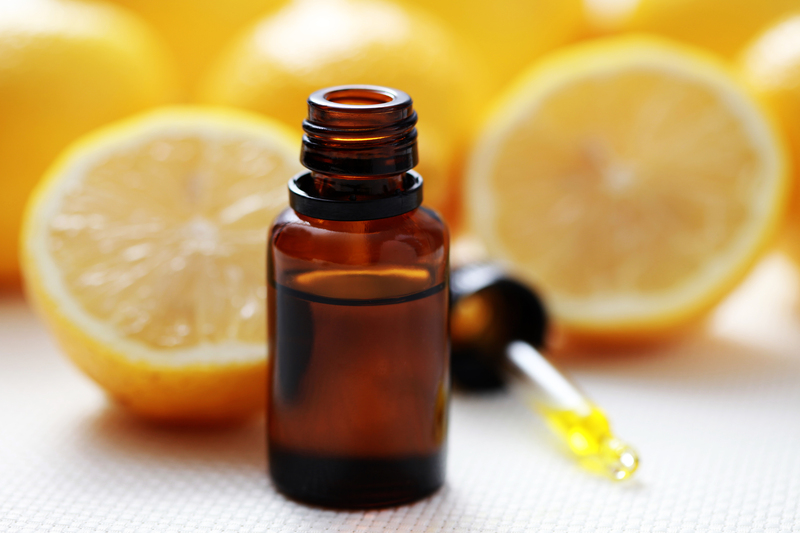Preventing and Dealing with Dampness
Posted on 24/07/2024
: Tips and Strategies for a Dry and Healthy Home
Dampness is a common problem that many homeowners face, especially in older properties or those with poor ventilation. Not only can it cause unpleasant musty odors, it can also lead to the growth of mold and mildew, which can have serious health implications. In this article, we will discuss the causes of dampness, its effects on your home and health, as well as the steps you can take to prevent and deal with this issue.
Dampness can occur for various reasons, but the most common causes include:
- Poor ventilation: Without proper air circulation, moisture can become trapped in your home. This is especially true in areas such as bathrooms and kitchens.
- Leaks or water damage: Leaking pipes, roof leaks, or even flooding can lead to excess moisture in your home.
- Condensation: When warm air comes into contact with cool surfaces, condensation occurs. This can happen on windows, walls, or ceilings.
- Rising damp: This happens when groundwater rises up through the walls of a building, usually due to a lack of an effective damp-proof course.
The presence of dampness in your home not only creates an unpleasant environment but can also have adverse effects on both your property and your health.
Firstly, damp conditions can cause damage to your home's structure over time. It can weaken the foundation and lead to rotting wood or rusting metal supports. It can also ruin plasterwork and cause paint to peel off.
Moreover, dampness promotes the growth of mold and mildew. These fungi thrive in moist environments and release spores that can trigger allergies and respiratory problems such as asthma. Prolonged exposure to mold has been linked to more severe health issues like lung infections and even neurological disorders.
Thankfully, there are steps you can take to prevent dampness in your home. These include:
- Proper ventilation: Ensure that your home has adequate ventilation, particularly in areas prone to moisture such as bathrooms and kitchens. Open windows and use exhaust fans to circulate the air.
- Fix leaks promptly: If you notice any leaks or water damage, address them immediately to prevent further damage.
- Use a dehumidifier: In areas with high humidity levels, using a dehumidifier can help remove excess moisture from the air.
- Install a damp-proof course: If rising damp is an issue, consider installing a damp-proof course. This is a barrier usually made of waterproof material that prevents groundwater from seeping into the walls.
If you already have dampness in your home, there are ways to deal with it effectively:
- Identify the source: The first step in dealing with dampness is identifying its source. This will help you determine the best course of action.
- Clean and dry affected areas: If mold and mildew are present, clean the affected area with a mixture of equal parts water and white vinegar. Then thoroughly dry the area using a fan or heater.
- Use mold-resistant materials: When making repairs or renovations, consider using mold-resistant materials such as drywall, paint, and insulation.
- Seek professional help: In extreme cases, it's best to seek professional assistance to properly assess and eliminate the dampness issue.
As with any problem, there are both pros and cons to consider when dealing with dampness.
Pros:
- A dry home is essential for maintaining its structural integrity
- Preventing mold growth can improve indoor air quality and reduce potential health risks
- Addressing leaks and other sources of moisture can save you from costly repairs in the long run
Cons:
- Dealing with dampness may require time, money, and effort
- It may be challenging to completely eliminate the issue without professional help
- In severe cases, it may be necessary to temporarily vacate the property for repairs or remediation.
- Regularly check your home for any signs of dampness, such as musty odors, peeling paint, or water stains.
- Immediately address any leaks or water damage to prevent them from causing further damage.
- Keep your home well ventilated by opening windows and using exhaust fans when cooking or showering.
- Consider using moisture-absorbing products, such as silica gel packs or activated charcoal, to reduce humidity levels.
- If you live in an area with high levels of rainfall, consider investing in a waterproofing system for your home.
Dampness is a common problem that can have serious consequences for both your property and health. By understanding its causes and taking preventative measures, you can ensure a dry and healthy living environment. Addressing any existing dampness issues promptly is crucial to avoid further damage and potential health risks. Seek professional help when needed to effectively deal with the problem.
Dampness is not something to be taken lightly. It can cause significant damage to your home and pose health risks for you and your family. However, by taking preventative measures and addressing any issues promptly, you can create a dry and healthy living space. Regular maintenance and keeping an eye out for any signs of dampness are key in preventing this problem from occurring. Remember, if you do encounter dampness in your home, seek professional help to ensure it is properly dealt with.
Dampness is a common problem that many homeowners face, especially in older properties or those with poor ventilation. Not only can it cause unpleasant musty odors, it can also lead to the growth of mold and mildew, which can have serious health implications. In this article, we will discuss the causes of dampness, its effects on your home and health, as well as the steps you can take to prevent and deal with this issue.
The Causes of Dampness
Dampness can occur for various reasons, but the most common causes include:
- Poor ventilation: Without proper air circulation, moisture can become trapped in your home. This is especially true in areas such as bathrooms and kitchens.
- Leaks or water damage: Leaking pipes, roof leaks, or even flooding can lead to excess moisture in your home.
- Condensation: When warm air comes into contact with cool surfaces, condensation occurs. This can happen on windows, walls, or ceilings.
- Rising damp: This happens when groundwater rises up through the walls of a building, usually due to a lack of an effective damp-proof course.

The Effects of Dampness
The presence of dampness in your home not only creates an unpleasant environment but can also have adverse effects on both your property and your health.
Firstly, damp conditions can cause damage to your home's structure over time. It can weaken the foundation and lead to rotting wood or rusting metal supports. It can also ruin plasterwork and cause paint to peel off.
Moreover, dampness promotes the growth of mold and mildew. These fungi thrive in moist environments and release spores that can trigger allergies and respiratory problems such as asthma. Prolonged exposure to mold has been linked to more severe health issues like lung infections and even neurological disorders.
Preventing Dampness
Thankfully, there are steps you can take to prevent dampness in your home. These include:
- Proper ventilation: Ensure that your home has adequate ventilation, particularly in areas prone to moisture such as bathrooms and kitchens. Open windows and use exhaust fans to circulate the air.
- Fix leaks promptly: If you notice any leaks or water damage, address them immediately to prevent further damage.
- Use a dehumidifier: In areas with high humidity levels, using a dehumidifier can help remove excess moisture from the air.
- Install a damp-proof course: If rising damp is an issue, consider installing a damp-proof course. This is a barrier usually made of waterproof material that prevents groundwater from seeping into the walls.
Dealing with Dampness
If you already have dampness in your home, there are ways to deal with it effectively:
- Identify the source: The first step in dealing with dampness is identifying its source. This will help you determine the best course of action.
- Clean and dry affected areas: If mold and mildew are present, clean the affected area with a mixture of equal parts water and white vinegar. Then thoroughly dry the area using a fan or heater.
- Use mold-resistant materials: When making repairs or renovations, consider using mold-resistant materials such as drywall, paint, and insulation.
- Seek professional help: In extreme cases, it's best to seek professional assistance to properly assess and eliminate the dampness issue.
The Pros and Cons
As with any problem, there are both pros and cons to consider when dealing with dampness.
Pros:
- A dry home is essential for maintaining its structural integrity
- Preventing mold growth can improve indoor air quality and reduce potential health risks
- Addressing leaks and other sources of moisture can save you from costly repairs in the long run
Cons:
- Dealing with dampness may require time, money, and effort
- It may be challenging to completely eliminate the issue without professional help
- In severe cases, it may be necessary to temporarily vacate the property for repairs or remediation.
Tips
- Regularly check your home for any signs of dampness, such as musty odors, peeling paint, or water stains.
- Immediately address any leaks or water damage to prevent them from causing further damage.
- Keep your home well ventilated by opening windows and using exhaust fans when cooking or showering.
- Consider using moisture-absorbing products, such as silica gel packs or activated charcoal, to reduce humidity levels.
- If you live in an area with high levels of rainfall, consider investing in a waterproofing system for your home.

Takeaways
Dampness is a common problem that can have serious consequences for both your property and health. By understanding its causes and taking preventative measures, you can ensure a dry and healthy living environment. Addressing any existing dampness issues promptly is crucial to avoid further damage and potential health risks. Seek professional help when needed to effectively deal with the problem.
Conclusion
Dampness is not something to be taken lightly. It can cause significant damage to your home and pose health risks for you and your family. However, by taking preventative measures and addressing any issues promptly, you can create a dry and healthy living space. Regular maintenance and keeping an eye out for any signs of dampness are key in preventing this problem from occurring. Remember, if you do encounter dampness in your home, seek professional help to ensure it is properly dealt with.



